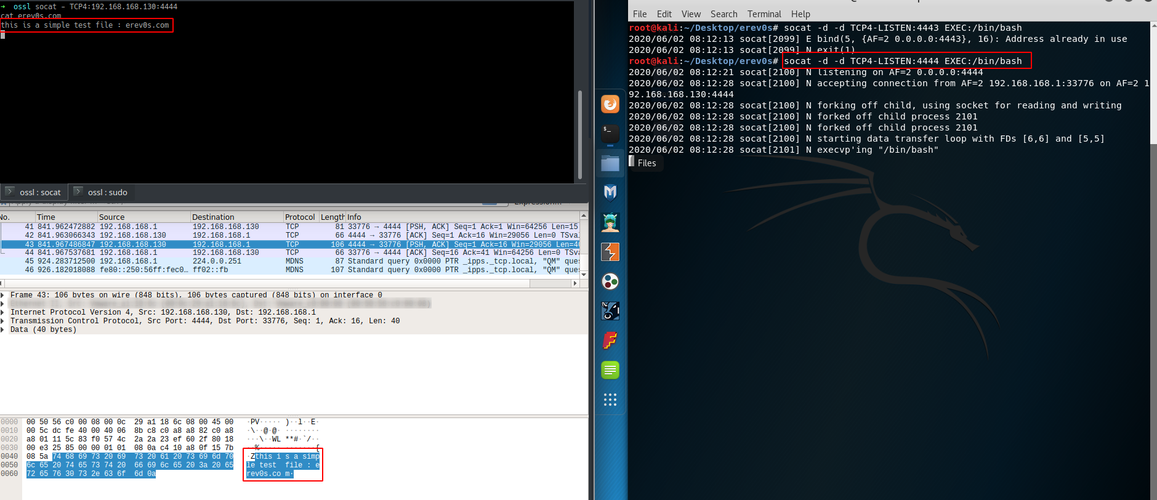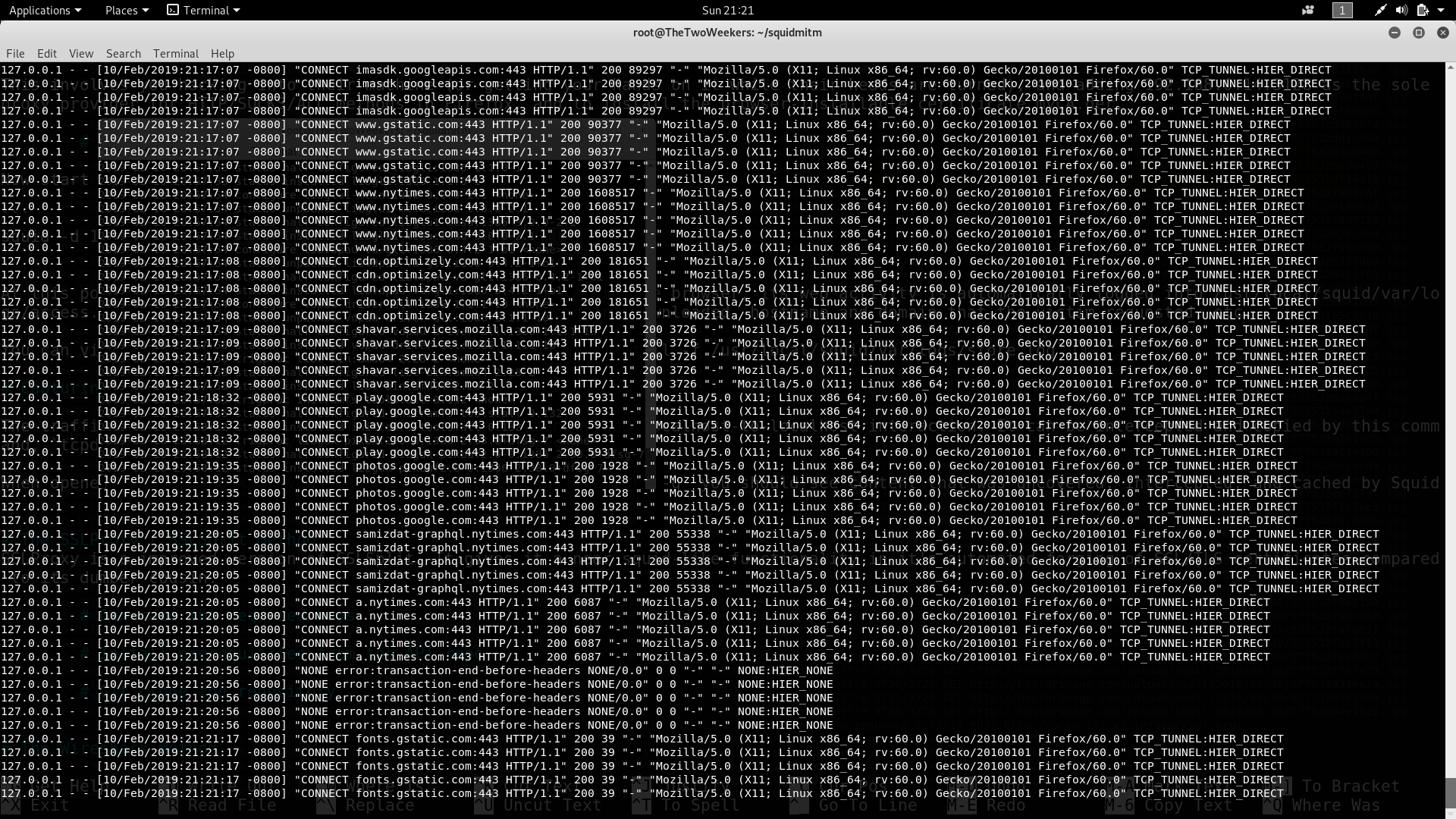

- #Linux socat tutorial how to
- #Linux socat tutorial install
- #Linux socat tutorial plus
- #Linux socat tutorial windows
#Linux socat tutorial windows
This only affects the current window the others in the session won’t be changed. We’ve used the tmux ls command in the top pane to list the windows in this session.

If you press Ctrl+B, and then double quotation marks (“”), you split the window horizontally into two panes. The screen command can do this, too, via a similar set of commands. When you do, any screen changes will appear simultaneously in both tmux sessions. However, you can do this with sessions that are still attached to their original terminal windows. We detached the “geek-2” session before we did this. If you select a new session, your current one detaches, and the one you selected is attached. Press Enter to move to the highlighted session or window or Esc to leave the session list without changing sessions. If you press the Right Arrow, the windows for the highlighted session are displayed. In that session, we’ll start dmesg: dmesg -w Let’s open another terminal window, and start a new tmux session called “geek-2”: tmux new -s geek-2 Screen can do this, but not as intuitively. Our session returns and becomes a visible, interactive session again.Īny long-running or continual processes you launched before detaching the session will still be running in the background (unless they’ve finished) when you attach the session. We type the following: tmux attach-session -t geek-1 We’ll also provide the name of the session we wish to recall. To attach a detached session, we’ll use the self-explanatory attach-session command with the -t (target session) option. This is handy because that’s what we use to attach to a background session, and then restore it to an interactive one. It also reminds us of the name we gave to the session. There’s a message from tmux telling us the session is detached. We return to the original terminal window. The session disappears and becomes a background session. We’ve started top in the session so we have a running process to demonstrate with. We can only see one at a time, though (more on that in a moment). Now we have two windows in the session one is running top, and the other dmesg. So we’ll have something running in this new window, let’s start the dmesg command with the -w (follow) option: dmesg -w You’ll get a blank terminal window in the current session.

To create a new window in the current session, press Ctrl+B, and then C. When the tmux session loads, “geek-1” is displayed as the first entry in the status bar, at the far left. Our session is going to be called “geek-1,” so we type the following: tmux new -s geek-1 To start tmux with a session name, use the new (new session) command, and the -s (session name) option. You can name sessions in screen, too, but they’re not displayed anywhere in the session windows. If you regularly start multiple tmux sessions, you’ll quickly appreciate the functionality of giving each of them a meaningful name. This might seem like it’s stating the obvious, but it’s a confirmation you’ve closed the session and not left it detached and running. We’ve left the images of the terminal windows here at the default size so you can see the information. In that case, the loss of one line for the status bar isn’t much of an issue. Of course, you’d normally expand your terminal window to make using a terminal multiplexer worthwhile.
#Linux socat tutorial plus
On the plus side, you won’t lose a line of terminal window real estate. (Unless you configure your own status bar.) You have to fly blind and rely on your wits to know what’s going on, which takes a bit of practice.

The screen command doesn’t give you a status bar by default. Each time you create a new window in a tmux session, its window number and the name of the program running in it are added to the status bar. The asterisk (*) means this is the window you’re looking at. If you run a program, its name will appear here. The only process running in this session is bash.
#Linux socat tutorial install
To install tmux on Ubuntu, type the following: sudo apt-get install tmux While screen is generally installed by default on popular Linux distributions, tmux isn’t.
#Linux socat tutorial how to
RELATED: How to Use Linux's screen Command Installing tmux We’ll cover that when we get to it, and see if tmux fares any better. As we go along, we’ll mention how screen handles the same feature or function. This time, we’re going to concentrate on tmux.


 0 kommentar(er)
0 kommentar(er)
